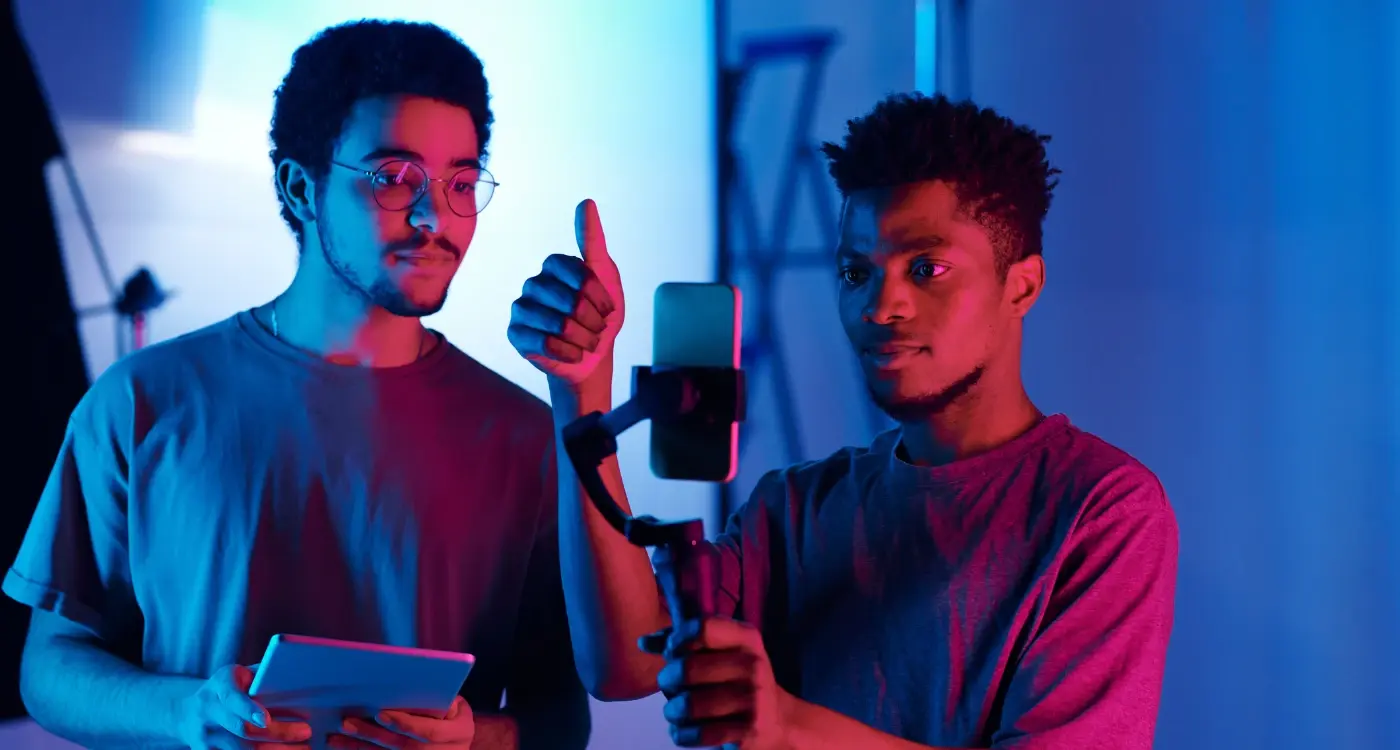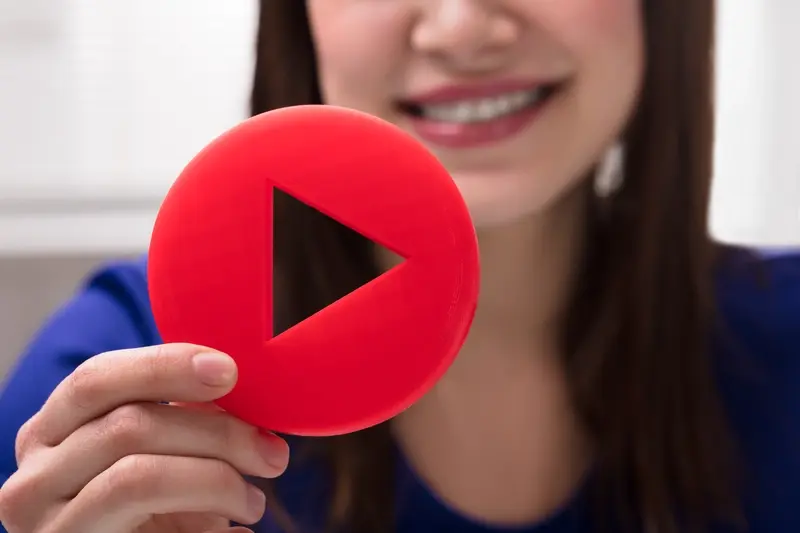How Do I Create Viral Social Media Content for My App?
Creating content that goes viral on social media is the holy grail for mobile app developers and marketers alike. I've worked with countless app teams over the years, and the ones that crack the code on social media content see downloads skyrocket—sometimes overnight. The truth is, viral content isn't just about luck; it's about understanding how people behave online and what makes them hit that share button.
When your mobile app has great social media content, it does the marketing work for you. People become your biggest advocates without you paying a penny for advertising. But here's the thing—most app developers I work with treat social media as an afterthought. They build a brilliant app, then wonder why nobody knows about it. Social media content creation should be part of your app strategy from day one, not something you bolt on later when downloads are disappointing.
The best social media content doesn't feel like marketing at all—it feels like entertainment, education, or inspiration that happens to feature your app
This guide will walk you through everything you need to know about creating social media content that people actually want to share. We'll cover finding your audience, making content that grabs attention, timing your posts perfectly, and building a community around your mobile app. Whether you're launching your first app or looking to breathe new life into an existing one, the strategies in this guide will help you turn social media into your most powerful marketing tool.
Understanding Your App's Social Media Potential
Not every app is built for viral fame—and that's perfectly fine. Some apps solve boring problems brilliantly, others entertain millions, and some do both. The trick is figuring out which camp your app sits in before you start creating content that nobody wants to see.
I've worked with apps that have gone from zero to trending topic overnight, and others that have built steady, loyal followings over months of consistent posting. The difference isn't always about having the flashiest features; it's about what makes your app worth talking about in the first place.
What Makes Content Shareable
Your app's social media potential depends on a few key factors. Does it solve a problem that people love complaining about? Great—that frustration is content gold. Does it create something visual that users want to show off? Even better. Does it help people look clever, funny, or successful? You're onto a winner.
Think about what happens when someone uses your app. Do they get a result they want to screenshot? Do they learn something they want to tell their mates about? Do they save time, money, or effort in a way that feels worth mentioning? These moments are your content opportunities.
Spotting Your Viral Hooks
Every app has at least one feature or outcome that could catch fire on social media—you just need to spot it. Here's what to look for:
- Before and after moments that show clear transformation
- Unexpected results that make people say "I never knew that"
- Social proof opportunities where users want to show their achievements
- Behind-the-scenes processes that people find interesting
- Problems your app solves that people didn't know had solutions
The apps that struggle with social media are usually the ones trying to make everything about their features rather than focusing on what their users actually want to share.
Finding Your Target Audience on Social Platforms
Here's the thing about social media—every platform has its own personality, and your app's target audience isn't scattered equally across them all. You might think casting a wide net across Facebook, Instagram, TikTok, and Twitter will catch more fish, but you'll end up spreading yourself too thin and missing the people who actually matter.
The mobile app market is packed with competition, which means understanding where your users spend their time online isn't just helpful—it's make or break. A productivity app targeting busy professionals will find more success on LinkedIn than Snapchat. A gaming app aimed at teenagers? That's TikTok and Instagram territory.
Platform Demographics Tell the Real Story
Each social platform publishes user data, and this information is gold dust for content creation. Instagram skews younger with strong visual focus; Facebook has an older, more diverse audience; TikTok dominates the Gen Z space; LinkedIn owns the professional crowd. Don't guess where your audience hangs out—research it.
Use platform analytics tools to see where your existing users are most active. If you don't have users yet, study similar apps and see which platforms generate the most engagement for them.
Testing Beats Assumptions Every Time
Once you've identified 2-3 platforms that match your target demographic, start small. Post the same content across these platforms and track engagement rates, click-throughs, and app downloads. The numbers don't lie—they'll show you exactly where your audience responds best.
Social media algorithms reward engagement, so focusing your efforts on platforms where your audience actually interacts with your content will give you much better results than trying to be everywhere at once.
Creating Content That People Want to Share
After working with hundreds of apps over the years, I've noticed something interesting—the content that gets shared the most isn't always the most polished or expensive to produce. It's the content that makes people feel something or gives them a reason to hit that share button.
The biggest mistake I see app developers make is creating content about their app rather than content their users actually want to share. Your followers don't wake up thinking "I really hope that productivity app posts another screenshot today!" They want content that entertains them, helps them, or makes them look good when they share it with their friends.
Make It About Your Users, Not Your App
The best shareable content solves a problem or answers a question your audience has. If you've built a fitness app, don't just post workout screenshots—share quick health tips, motivation quotes, or transformation stories from real users. If it's a cooking app, post ingredients lists for trending recipes or kitchen hacks that work without your app.
This approach works because people share content that adds value to their own social media presence. When someone shares your post, they're essentially saying "this is useful and I want my friends to see it too."
The Three-Second Rule
Here's something that took me years to figure out—you have about three seconds to grab someone's attention before they scroll past your content. That means your first line of text, your image, or your video needs to hook them immediately. Start with the benefit, the surprise, or the solution rather than building up to it.
The most shareable content also tends to be easily digestible. Lists work well, step-by-step guides are brilliant, and anything that can be understood at a glance has a better chance of being shared.
Using Visual Elements That Grab Attention
Your mobile app might be the cleverest thing since sliced bread, but if your social media content looks boring, nobody will stop scrolling to give it a second glance. Visual elements are what make people pause—they're the hook that catches someone's eye in a sea of endless posts.
When creating visual content for your app, think about what makes someone stop mid-scroll. Bright colours work well, but don't go overboard and make everything look like a rainbow exploded. Clean, simple designs often perform better than cluttered ones. Your app's screenshots are great, but they need context—show them being used in real situations rather than just floating on a plain background.
Making Screenshots Work Harder
Screenshots alone won't cut it anymore. People see them and think "just another app trying to sell me something." Instead, combine your screenshots with real scenarios. Show your fitness app being used at the gym, or your recipe app helping someone cook dinner. This gives people a reason to care about what they're seeing.
Video Content That Actually Gets Watched
Short videos—we're talking 15 to 30 seconds—tend to get shared more than static images. You don't need Hollywood production values; your phone camera will do just fine. Show your app solving a real problem or demonstrate a feature that makes life easier. Creating engaging video content for platforms like TikTok and Instagram requires understanding each platform's unique format preferences and audience expectations.
The best social media visuals don't just show what your app looks like—they show what life looks like when someone uses your app
Remember that different social platforms prefer different visual formats. Instagram loves square images and vertical videos, whilst LinkedIn prefers landscape orientations. Test different styles and see what your audience responds to best—the data will tell you what works.
Timing and Posting Strategies That Work
Getting the timing right for your app's social media posts is like finding the sweet spot on a guitar string—hit it just right and everything resonates perfectly. After working with countless app developers over the years, I've noticed that many brilliant apps fail to gain traction simply because their content reaches an empty room.
The truth is, your audience isn't scrolling through social media at random times. They have patterns, habits, and predictable moments when they're most likely to engage with your content. For most apps targeting working professionals, posting between 9-11am and 7-9pm tends to work well—people check their phones during coffee breaks and after dinner.
Platform-Specific Timing Matters
Each social platform has its own rhythm. Instagram users are most active during lunch hours and evenings, whilst LinkedIn buzzes with activity on Tuesday through Thursday mornings. TikTok? That's an evening and weekend playground where your app content needs to compete with dance videos and cat clips.
But here's what most people get wrong—they post once and disappear. Consistency beats perfection every single time. Your audience needs to know when to expect new content from you.
Quality Over Quantity Always Wins
I'd rather see you post three well-crafted pieces of content per week than daily posts that add no value. Your followers will thank you for respecting their time, and the algorithms will reward you with better reach.
- Test different posting times for two weeks and track engagement
- Use scheduling tools to maintain consistency without living on your phone
- Create a content calendar that aligns with your app's update cycle
- Monitor your analytics to spot patterns in your audience behaviour
- Adjust your strategy based on what the data tells you, not what you think should work
Remember, timing isn't just about when you post—it's about being present when your audience needs you most.
Building Community Around Your App
Here's the thing about building a community around your mobile app—it's not something that happens overnight, and it definitely isn't something you can force. I've worked with countless app developers who think they can just throw up a Facebook group or Discord server and expect people to flock there. That's not how it works!
The secret to building a genuine community lies in giving people a reason to stick around and engage with each other, not just with your brand. Your app users need to feel like they're part of something bigger than just downloading and using your software. They want to connect with like-minded people who share their interests or challenges.
Choose the Right Platform for Your Community
Different social media platforms work better for different types of apps. A fitness app might thrive on Instagram with workout videos and progress photos, whilst a productivity app could build a strong community on LinkedIn or Reddit where professionals gather to share tips and strategies.
- Facebook Groups work well for detailed discussions and file sharing
- Discord is perfect for real-time chat and gaming communities
- Reddit offers topic-focused discussions with upvoting systems
- Instagram suits visual content and lifestyle apps
- LinkedIn targets professional and business-focused communities
Start small with one platform and focus on creating quality interactions rather than trying to be everywhere at once. A thriving community of 100 engaged users is far more valuable than 1,000 silent members.
Keep Your Community Active and Engaged
Once you've chosen your platform, the real work begins. You need to consistently provide value through helpful content creation, answer questions promptly, and encourage user-generated content. Share behind-the-scenes updates about your app development, celebrate user achievements, and create regular discussion topics that get people talking to each other—not just responding to your posts. Remember that handling negative feedback professionally is crucial for maintaining a positive community atmosphere.
Measuring Success and Improving Your Content
Right, so you've been posting content for a while now and things seem to be going well. But how do you actually know if your social media efforts are working? I see this all the time—app developers who think they're doing brilliantly because they got a few likes, when actually their content isn't moving the needle at all.
The numbers don't lie, and you need to be tracking the right ones. Likes and follows are nice, but they don't pay the bills. What you really want to see is app downloads, user registrations, and people actually using your app after they've found you through social media. Most social platforms give you basic analytics, but you'll want to use UTM parameters in your links so you can track exactly which posts are driving real results.
What Actually Matters
Engagement rate is your best friend here—it shows you how many people are genuinely interested in what you're sharing. If you're getting lots of views but no comments or shares, something's not clicking with your audience. Save rate is another goldmine; when people bookmark your content, they're telling you it's valuable enough to come back to. Creating tutorial content that people actually want to engage with can significantly boost these engagement metrics.
Making Changes That Work
Once you've got your data, don't be afraid to experiment. Maybe your audience loves behind-the-scenes content but ignores your product screenshots. Perhaps they engage more with questions than statements. The beauty of social media is you can test things quickly and cheaply—just make sure you're only changing one thing at a time so you know what's actually making the difference.
Conclusion
Creating viral social media content for your mobile app isn't about getting lucky or hoping something will magically take off. After working with hundreds of apps over the years, I can tell you that the ones which succeed on social media are the ones that understand their audience, create genuinely shareable content, and stick to a consistent strategy.
The truth is, most apps fail at social media because they treat it like an afterthought—something they'll figure out after launch. But the apps that really make it big? They build their social media strategy right into their development process from day one. They know who they're talking to, what those people want to see, and how to give it to them in a way that makes people want to share it with their friends.
Building a community around your app takes time. There's no shortcut to genuine engagement, and there shouldn't be. The communities that last are the ones built on real value, not gimmicks or tricks. When you focus on helping people, entertaining them, or solving their problems, the sharing happens naturally.
Don't forget that social media moves fast, but good content creation principles stay the same. Visual elements that grab attention, timing that works for your audience, and content that people actually want to share—these things don't go out of style. What changes is how you package them and which platforms you use. Keep testing, keep measuring, and keep improving. Your next post might just be the one that takes your app to the next level.
Share this
Subscribe To Our Learning Centre
You May Also Like
These Related Guides

How Do I Create Engaging Video Content For My App On TikTok And Instagram?

What Type Of Content Should I Create To Promote My Mobile App?



